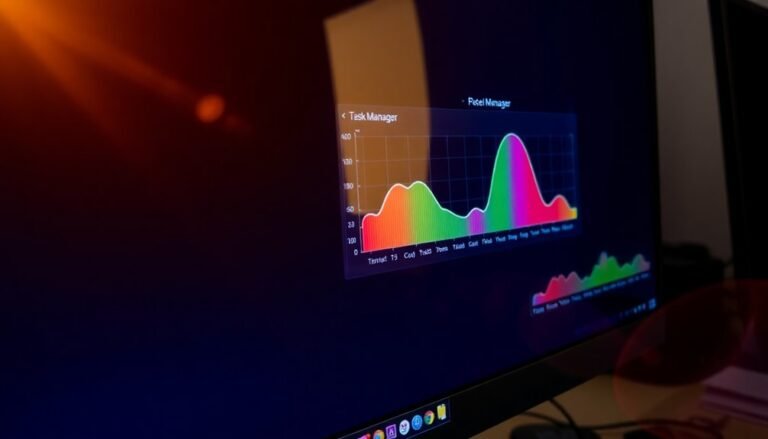Windows Error Reporting: Understanding Error Reporting Service

With Windows Error Reporting, you can automatically detect, capture, and analyze application and system failures on your device. The service collects relevant data when errors occur.
You have the option to customize or restrict data collection through privacy settings or Group Policy. Reports may be sent securely to Microsoft for analysis and solution delivery.
Local dump files are available to help you troubleshoot issues directly. You control what information is shared and how solutions are distributed.
Next, discover exactly how WER’s architecture works and how you can fine-tune its behavior.
How Windows Error Reporting Works

How Windows Error Reporting (WER) Works to Fix Crashes and System Failures
Windows Error Reporting (WER) is an essential tool that automatically activates when an application crashes or a system component fails, helping to capture and analyze problems quickly. WER also responds to critical events such as Blue Screen of Death (BSOD), service failures, application hangs, and hardware driver errors.
Upon detecting an error, WER immediately suspends the faulty process and initiates the error reporting procedure to diagnose the issue. A dedicated background service continuously monitors registered applications and overall system health. However, detailed error reporting is only triggered for apps with crash handlers explicitly registered in the Windows system registry. This ensures efficient monitoring without impacting system performance. WER operates as a background service that detects application crashes and system errors to continually safeguard your system from unnoticed faults.
Once an error is detected, Windows Error Reporting collects vital system information including the operating system version, hardware specifications, and language settings. It also gathers detailed data about the crashing application, such as the app name, version, and publisher.
Additional technical details like exception codes, module information, and call stacks are included to aid in troubleshooting. If privacy settings permit, WER may also gather memory dumps for more comprehensive analysis.
This targeted data collection by Windows Error Reporting enables Microsoft and software developers to effectively classify, diagnose, and resolve recurring issues in Windows environments. By leveraging WER, users benefit from faster fixes and more stable system performance.
Understanding how Windows Error Reporting works can help you better manage and troubleshoot errors on your PC.
WER Architecture and System Operations
Windows Error Reporting (WER) is a crucial system feature that operates seamlessly in the background to capture, process, and transmit diagnostic information for Windows applications and system errors.
At the core of WER’s architecture is wer.dll, which initiates error capture and displays user interface dialogs when an error occurs. The WER service, managed by wersvc.dll and running within a dedicated svchost.exe process, handles data collection and secure communication with Microsoft’s Watson servers, ensuring that error reports are transmitted efficiently.
The error data is organized and queued by wrmgr.exe, a key component that guarantees reliable report delivery by retrying uploads if the initial attempt fails. WER categorizes error reports into buckets based on factors like application name and version, which helps Microsoft and developers identify and analyze recurring problems across many systems.
For users looking to manage error reports, the Problem Reports and Solutions control panel—powered by wercon.exe and wercplsupport.dll—provides an easy interface to view error history and configure reporting preferences.
In cases of hardware faults, the Windows Hardware Error Architecture (WHEA) integrates with WER by forwarding hardware error packets through low-level handlers.
This integration creates a unified error reporting flow for both hardware and application faults, enhancing diagnostic coverage and system reliability.
Understanding the WER architecture and its system operations is essential for troubleshooting Windows errors effectively and maintaining system health.
Privacy Controls and Data Collection
Windows Error Reporting (WER) Privacy Controls: How to Manage Diagnostic Data Collection Securely
Privacy is a top priority when it comes to diagnostic data collection, and Windows Error Reporting (WER) provides robust privacy controls to help you manage what information is shared with Microsoft.
With WER, you can customize privacy settings using Group Policy or local configurations to control the level of data detail collected. For example, you can choose whether to include memory dumps—which might contain sensitive data—or limit reports to only basic system information.
WER ensures all error reports are transmitted securely, and Microsoft adheres to strict data retention policies that keep your reports confidential and used solely for troubleshooting and quality improvement.
For enterprise environments, administrators have the ability to enforce policies that restrict or disable error reporting, ensuring sensitive data remains on-premises.
Top Ways to Control Privacy in Windows Error Reporting:
- Use Group Policy or Mobile Device Management (MDM) settings to limit error report details.
- Exclude memory dumps to prevent sending sensitive information.
- Configure WER to send only essential system and error metadata.
- Disable cloud transmission to keep error reports stored locally for internal analysis.
Customizing Error Reporting and Local Dump Configuration

To capture local dump files effectively, customize the Windows Error Reporting settings by creating or modifying subkeys under the *Windows Error Reporting* registry.
Specify the desired dump type—mini, full, or custom—and define the storage folder location for these dump files.
Ensure you make all registry changes carefully with administrative privileges, and restart your system to apply the updates.
Properly configuring local dump file settings enhances error analysis and troubleshooting on Windows systems.
Key Benefits and Functional Capabilities
Windows Error Reporting is a powerful tool that runs quietly in the background to enhance your system’s stability and security. By automatically collecting detailed error and crash data from millions of devices, it helps Microsoft quickly identify software bugs, security vulnerabilities, and compatibility issues. This proactive approach accelerates the development of targeted patches and prevents problematic components from becoming widespread threats.
With a robust backend infrastructure processing over 100 million reports daily, Windows Error Reporting ensures comprehensive analysis and rapid response to emerging system issues. The diagnostic data collected—including system specifications, error codes, and call stacks—streamlines troubleshooting and prioritizes fixes efficiently.
Key benefits and functional capabilities of Windows Error Reporting include:
- Rapid identification and resolution of common system failures
- Improved operating system security through timely vulnerability reporting
- Enhanced software quality assurance and reliability improvements
- Efficient troubleshooting supported by actionable diagnostic data
Optimize your Windows experience by leveraging the full power of Windows Error Reporting for a more stable, secure, and reliable operating system.
Communication Channels and Solution Delivery
Windows Error Reporting (WER) is a powerful tool that operates seamlessly in the background to enhance your Windows experience by efficiently reporting errors and delivering solutions. When a system error occurs, the WER client on your device securely transmits critical error information—such as Windows version, hardware details, and crash specifics—over encrypted Internet channels to Microsoft’s servers.
Initial error reports include only essential metadata, with more detailed data like memory dumps sent only when necessary and with your explicit consent. Users and administrators can easily manage what information is shared and when by configuring Group Policy and privacy settings to control consent levels and prompt behavior.
After Microsoft receives the error report, expert engineers analyze the data to detect error patterns and develop potential fixes. If a solution is available, WER can automatically deliver updates through Windows Update or notify users directly, based on individual settings and required permissions.
In corporate environments, IT administrators have the flexibility to automate, restrict, or suppress solution delivery to ensure error reporting complies with company policies and privacy standards.
Frequently Asked Questions
Can Windows Error Reporting Be Completely Disabled on a Device?
You can disable Windows Error Reporting by editing the registry, stopping and disabling the WerSvc service, or using PowerShell. However, you might still see some error processes, so complete suppression may require disabling related diagnostics and telemetry services.
Does WER Impact System Performance During Heavy Usage?
WER usually doesn’t impact system performance during heavy usage, but if crashes occur often, you might notice high CPU or disk use. If you see slowdowns, troubleshoot with repairs or scans, and consider disabling WER temporarily.
Are Third-Party Tools Compatible With WER Error Reports?
You can capture, extend, and redirect WER error reports with many third-party tools. Register custom crash handlers, adjust registry keys, and configure policies to integrate these tools—just make certain you manage privacy, data flow, and compatibility issues.
What Types of Errors Are Not Reported by WER?
You won’t see WER report errors from excluded applications, policies that disable reporting, secure or offline systems, minor or filtered issues, unsupported components, or when user preferences suppress data. Always check policy and exclusion settings first.
How Do Organizations Audit Historical WER Report Submissions?
You audit historical WER report submissions by extracting logs with Event Viewer or PowerShell, filtering by event type or date, analyzing crash buckets for trends, and ensuring audit policies capture complete data for compliance and reporting accuracy.
Conclusion
With Windows Error Reporting, you’re the pilot and WER is your trusted co-pilot, helping you navigate system turbulence with real-time diagnostics and actionable solutions. By understanding its architecture, privacy settings, and customization options, you can fine-tune your system’s response to errors. WER turns cryptic crashes into clear signals, guiding you step-by-step toward smoother operation and improved security. Harness these tools, and you’ll keep your Windows environment flying steady, safe, and informed.





